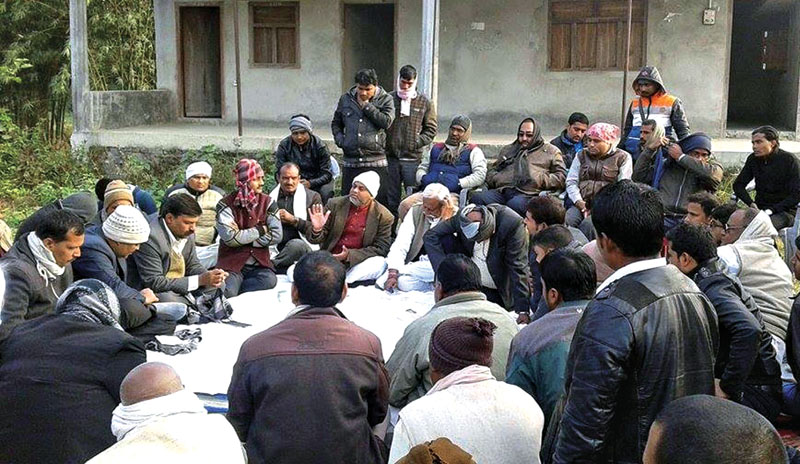Agitating forces keen to form grand alliance, as standoff with Big III continues
Kathmandu, January 28
As the standoff between the agitating Madhesi forces and the government/three major parties continues even after the passage of two constitutional amendments, Madhesi parties are seriously mulling over formation of a grand alliance.
The agitating forces are, however, divided over whether all of the agitating forces should join one front as its constituents or be part of a grand alliance with smaller alliances as its constituents.
Chairperson of Tarai Madhes National Campaign Jay Prakash Prasad Gupta, who is a constituent of Federal Inclusive Madhesi Alliance, said the best thing for the agitating forces would be to come under one umbrella, but if that was not possible, several alliances that are agitating against the provisions of the new constitution should forge a working alliance.
“All agitating forces have realised the need to form a grand front or alliance. We need to have our uniform charter of demands, single dialogue committee to talk to the government and major parties and common protest programmes,” he said.
Stating that all the past movements from Rana time till 2006 popular movement succeeded to achieve their cherished goals on account of the alliance between various forces, Gupta said Madhesi and other marginalised communities, including Dalits, Muslims and Tharus, needed to come together.
Sadbhawana Party Chair Rajendra Mahato also said the formation of grand alliance of agitating forces would increase their bargaining power on the negotiating table.
“If all the forces are united, it will end confusion among the people about the demands of the agitating forces and would help settle issues easily,” Mahato said.
He added that he was in favour of bringing all the forces under one umbrella but if that was not possible then he was ready to forge working alliance with several groups.
Co-chair of Federal Socialist Forum–Nepal Rajendra Shrestha said his party was in favour of expanding the Federal Alliance, but not the UDMF because the former was a national alliance and the latter was a Madhes-centric front.
“Some Madhesi parties want to be part of the UDMF, but since they had voluntarily left the front in the past, it would not be wise to induct them in the front. They can, however, join the Federal Alliance,” Shrestha added referring to some constituents of the Federal Inclusive Madhesi Alliance.
Shrestha said there was difference between his party and the SP over the forms of protest in future but that could be resolved through talks.
“SP Chair Rajendra Mahato wants to strengthen Madhes-centric front or alliance, but we want to strengthen national alliance, particularly the Federal Alliance,” Shrestha added.
Due to lack of coordination and unity among the agitating forces, various agitating forces put forth their own charter of demands. While the UDMF put forth 11-point demands to the government, FIMA presented nine-point demands.
The charter of demands put forth by Tharuwan/Tharuhat Joint Struggle Committee and Matrika Prasad Yadav-led Joint Madhesi Movement Committee contained 13- and 10-point demands, respectively.
A member of Tharuwan/Tharuhat Joint Struggle Committee said their demands were similar to those of UDMF and they would soon negotiate with other agitating forces to forge unity. “These two amendments do not address our concerns.
We have no alternative but to forge an alliance with the other agitating forces,” he added.
Political analyst Rajesh Ahiraj said the ongoing Madhes agitation had not been effective even after months of agitation mainly because the agitating Madhesi forces lacked clarity on issues and solidarity of professional and political forces.






